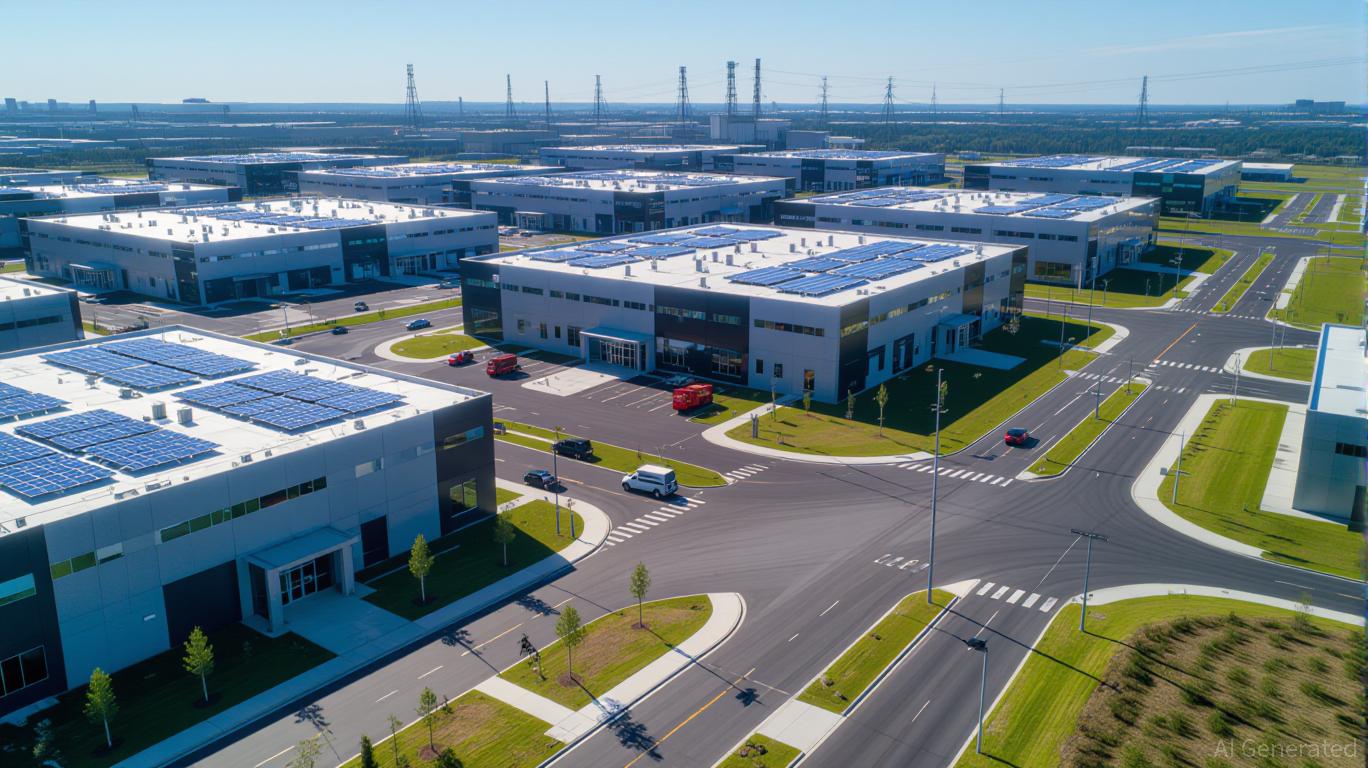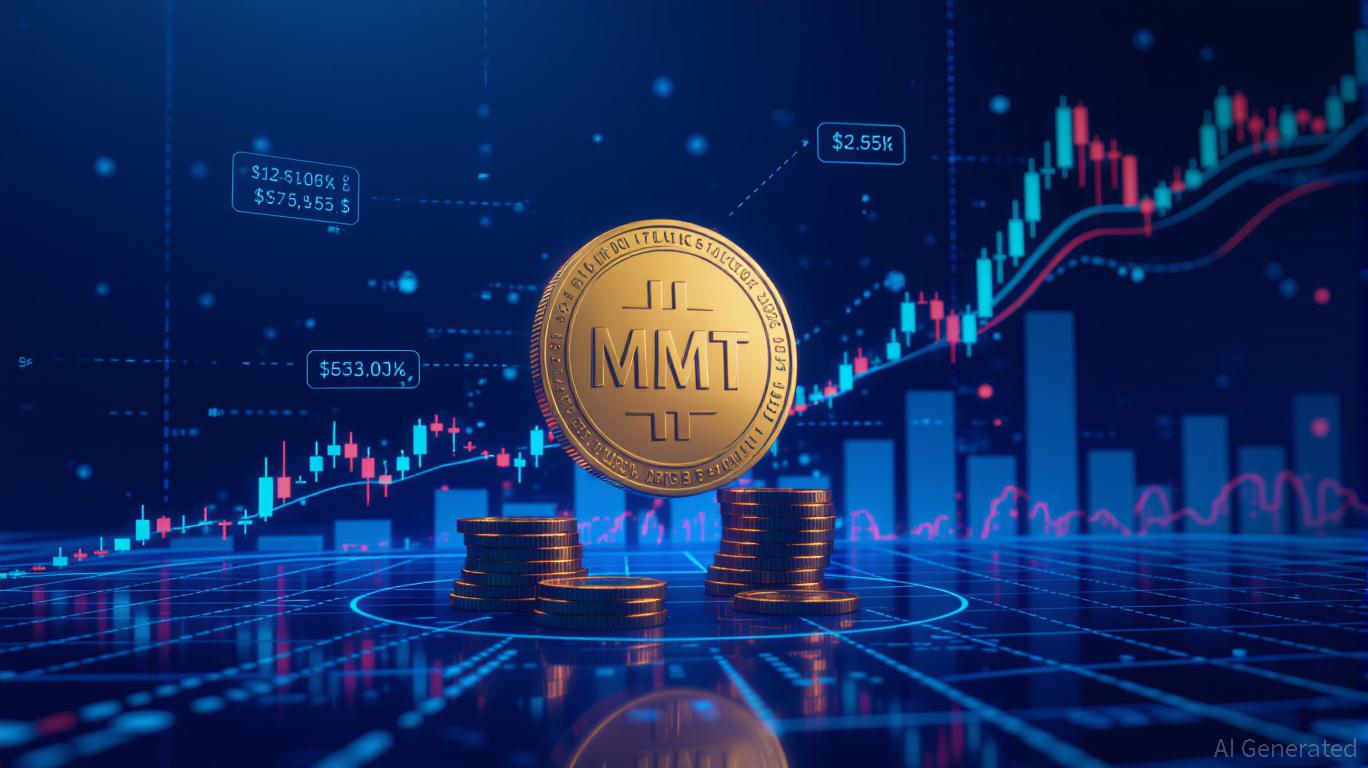The transformation of the Xerox campus in Webster, NY: Driving Expansion in Industrial Real Estate and Infrastructure
- Webster’s Xerox Campus redevelopment transforms a 300-acre brownfield into a high-growth industrial hub by 2025 via $9.8M FAST NY grants and state funding. - Infrastructure upgrades (roads, sewer, power) position the site to compete with Sun Belt markets, attracting projects like a $650M dairy plant creating 250 jobs. - Low 2% industrial vacancy rates in Western NY and strategic proximity to Buffalo’s port highlight the region’s appeal for advanced manufacturing and logistics. - State-backed $283M Upstat
Strategic Infrastructure: Building a Competitive Edge
Upgrades at the Xerox Campus are carefully planned to resolve key challenges in today’s industrial development. Improvements to roads, expanded sewer capacity, and electrical infrastructure are positioning the site to rival top industrial regions like those in the Sun Belt and Midwest
The broader $283 million state commitment to Upstate New York’s industrial expansion further illustrates the magnitude of this initiative. By focusing on industries like semiconductors and renewable energy, Webster is establishing itself as a key link in the national supply chain, taking advantage of its access to Buffalo’s port and rail systems

Industrial Real Estate: Stability Amid a Challenging Market
Webster’s industrial property sector is already surpassing national averages. By 2025, warehouse and industrial vacancy rates in Western New York are around 2%, a sharp contrast to the 7.3% national figure
Demand for industrial properties is also being driven by "bluefield" projects, which combine advanced manufacturing with residential and commercial elements. This strategy not only broadens the local economy but also appeals to businesses looking to reduce employee commute times
Corporate Commitments and Economic Impact: Demonstrating Success
Although specific pre-leasing deals for the Xerox Campus have not been made public, projects like fairlife® serve as clear evidence of the site’s promise. The dairy plant alone is expected to contribute $650 million to the local economy and create well-paying jobs, helping the region diversify beyond its traditional manufacturing base
While recent searches do not provide detailed economic impact studies, broader trends offer insight. The Buffalo-Niagara area ranked as the 10th-largest U.S. exporter in 2023, reflecting its international reach, while the growth of cold storage and tech manufacturing signals a move toward higher-value industries
Risks and Considerations: Weighing Optimism with Realism
All investments carry some risk. The national industrial property market faces challenges such as increasing construction expenses and slower leasing activity due to higher interest rates
Furthermore, forecasts predict that national industrial leasing will recover by mid-2026, reaching 119.3 million square feet per year, suggesting that demand for high-quality industrial space will stay strong
Conclusion: Setting the Standard for Forward-Looking Investment
The redevelopment of the Xerox Campus demonstrates how focused infrastructure spending can drive growth in industrial real estate. By aligning with national shifts—like the move toward domestic manufacturing and sustainable logistics—Webster is creating a model for other Upstate communities. For investors, the mix of ready-to-build infrastructure, low vacancy rates, and strong corporate interest makes for a persuasive investment case. As 2025 approaches, the campus stands not only as a redevelopment project but as a symbol of economic renewal in the post-pandemic landscape.
Disclaimer: The content of this article solely reflects the author's opinion and does not represent the platform in any capacity. This article is not intended to serve as a reference for making investment decisions.
You may also like
Bitcoin Updates: Tether's Unstable Backing and Bitcoin's Rally Intensify Liquidity Shortage
- Bitcoin's price surge triggered Tether (USDT) outflows, raising liquidity risks as reserves face S&P downgrade. - NYDIG reports $3.55B ETF outflows in November, linked to corporate trades and algorithmic stablecoin losses. - S&P cites 5.6% Bitcoin exposure in USDT reserves, exceeding overcollateralization buffers, risking undercollateralization. - Analysts warn of self-reinforcing cycles as Bitcoin rallies coincide with Tether redemptions, straining liquidity. - Tether's 24% high-risk assets in reserves

Global Exchanges Caution: Excluding Crypto May Undermine Market Fairness and Integrity
- Global exchanges urge SEC to reject broad crypto exemptions for tokenized stocks to prevent market integrity risks and unfair competition. - SEC considers sandbox framework for crypto pilots, but warned by WFE and SIFMA against creating parallel markets and eroding safeguards. - SIFMA highlights crypto market collapses, stressing that U.S. markets’ strength lies in regulated depth and liquidity, not speed. - Robinhood and Coinbase advance tokenized stock initiatives despite resistance from traditional ex

Reevaluating MMT After Quantitative Easing: Insights from the Latest Rise in MMT Price Forecasts and Their Implications for Market Outlook
- Post-QE markets show MMT's influence on digital assets, with MMT token surging 1,300% driven by Binance airdrops and institutional buying. - Q2 2025 saw fixed-income markets shift to traditional risk-return metrics as MMT's dominance waned amid normalized term premiums and higher debt compensation demands. - Investors rotated to small-cap/value equities and AI infrastructure amid fiscal stimulus, while elevated valuations emphasized diversification and fundamentals. - MMT remains relevant for sovereign f

AAVE +0.54% As Institutional Interest in Euro Stablecoins Continues to Rise
- Aave (AAVE) rose 0.54% in 24 hours to $186.75, reflecting growing institutional interest in EU stablecoin infrastructure. - Deutsche Börse plans to integrate EURAU stablecoin into its custody services, expanding digital-asset capabilities under MiCA regulations. - The move aligns with EU efforts to reduce reliance on U.S. stablecoins and promote euro-pegged alternatives through regulated frameworks. - Institutional adoption of stablecoins may indirectly benefit DeFi platforms like Aave by enhancing liqui
